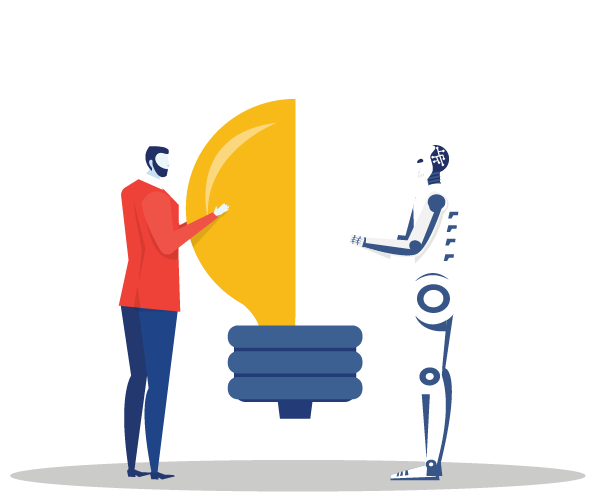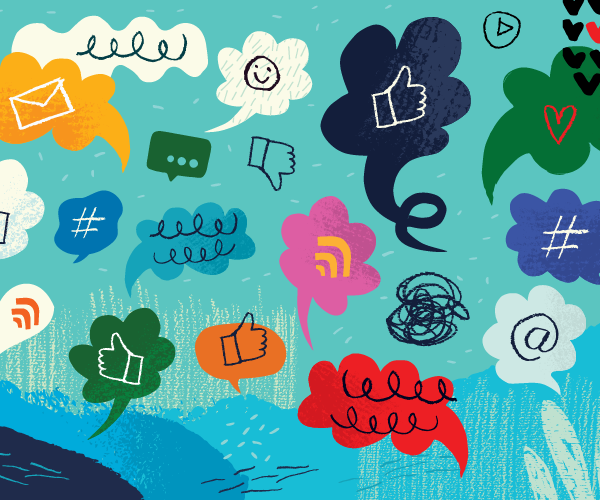
The Rambutan Rule
Micro-inequities, unconscious bias in the workplace can cause significant negative impact if not addressed
May 30, 2023
6 minute ReadBy Nicole Nelson
In any given scenario, Charlotte Westerhaus-Renfrow will be the first to tell you it is easier to prejudge a situation than to actually get the facts.
The clinical assistant professor of management and business law at Indiana University’s Kelley School of Business has combined her international legal and higher education background to focus on the unconscious bias each and every one of us battles on a daily basis. Including Westerhaus-Renfrow, herself, who said unconscious bias is unintentional and inherently human — and it’s only human to have unknown and different biases infiltrate your place of employment.
“We are all born with unconscious bias,” Westerhaus-Renfrow said.
While unconscious bias is intrinsically part of every personality, Westerhaus-Renfrow knows first-hand that such predispositions may range widely and be based on the shade of person’s skin to the texture and appearance of a fruit, such as the rambutan.
The former vice president of diversity of inclusion with the National Collegiate Athletic Association recently overcame her adverse thoughts toward the rambutan’s reddish brown, spiky exterior during a recent Costco run. Despite the spidery legs coming out of the fruit that she unconsciously determined to appear hideous, Westerhaus-Renfrow purchased a bulk package of them. Once home, she cut open the unsightly exterior of the rambutan to find an edible, translucent flesh within bursting with juicy flavors that mingled the tastiness of a pear crossed with a grape.
Despite her preconceived notions, Westerhaus-Renfrow now deems the southeastern Asian fruit to be absolutely delicious.
“See what happens when we have bias?” said Westerhaus-Renfrow. “A lot of times in situations, what we perceive as different is different, so it must be bad. It must be bad, so we are not going to try it. But how would I know if I hadn't tried it?”
This rambutan scenario that played out in Westerhaus-Renfrow’s personal life also applies to the workplace.
“Bias is far from intentional,” said Westerhaus-Renfrow. “It is a very unconscious bias that we have in business and how we deal.”
Westerhaus-Renfrow said unconscious bias based on prejudgment in the workplace is where you tend to see people treated unfairly based on lack of experience or knowledge. And that can hurt your business.
Bias in the areas of talent acquisition and talent development also top the list when it comes to bias facing many businesses, according to Keyla Waslawski, vice president of the Cultural Intelligence Center based in Grand Rapids, Mich., which offers an Unconscious Bias Certification.
“The one we often see is affinity bias, which is a general tendency to warm up and give preference to people who are like us,” said Waslawski. “Sometimes we hear this in terms of fit. That candidate doesn’t seem to fit our culture or our team.”
Instead of thinking about culture fit, Waslawski said CIC encourages leaders to think about culture add.
“In other words, what can leaders do to add diversity to their team,” said Waslawski. “This could be diversity of gender, age, race, ethnicity, functional backgrounds and more.”
Waslawski said by utilizing cultural intelligence — the ability to relate and work effectively with people from different cultural backgrounds — leaders and recruitment managers are better able to mitigate their biased actions.
“Nothing can stop our unconscious bias, but applying cultural intelligence gives us the skills we need to keep from acting on our biased thoughts,” said Waslawski.
Whether from a leadership or recruitment perspective, Westerhaus-Renfrow said a range of biases exists based on fixed dimensions of diversity.
“We all have diverse layers where bias can creep in and affect your business, your customer service and who you hire,” Westerhaus-Renfrow said, citing examples of age, gender, race, ethnicity, physical ability and sexual orientation as attributes rife for prejudgment. “These are things a customer or an employee cannot necessarily change.”
While customers or employees cannot — or will not — change such character traits, employers can.
“Do you trust older people more so than younger people? Or do you have a tendency to select men over women?” said Westerhaus-Renfrow. “These are areas where picking can creep into your thinking and diminish productivity and innovation.”
External dimensions of your customers and your employees can come into play, too.
“These are things that can fluctuate with each employee or each of your market personas,” said Westerhaus. “These are favorable mostly in bias, but may be unfavorable in comparison based on people's religion, marital status or educational background.”
Unfair and unconscious bias can also raise its ugly head in the operational side of business with the treatment of management versus non-management individuals.
“How do you treat people based on the division or department or area they work in?” said Westerhaus-Renfrow. “Is it fair, based on facts, or is there some unfavorable bias there?”
Westerhaus-Renfrow said seniority is a common default to unconscious bias due to the how long they have been working for the company.
“How do we treat people differently? Are you overlooking someone with less work experience, and less seniority, that is a real go-getter? Or maybe we should treat people better for seniority reasons — but is it based on facts or is it based on a prejudgment?”
In terms of the work content itself, Westerhaus-Renfrow suggests employers consider what their employees actually do and explore their job descriptions.
“We sometimes will prejudge and determine that, based on a title, someone is smarter. But is that always the case?” Westerhaus-Renfrow said of both favorable and unfavorable biases toward such designations. “People will fight tooth and nail for job descriptions and titles because they know there is a certain bias, favorable or unfavorable, that goes with it.”
Westerhaus-Renfrow relies upon a number of tools to advise and teach her student base.
“I have always had a fascination with helping companies, businesses and my students as they go into business, be more productive, more innovative, and actually just learn a lot about people by being observant of unconscious bias and being aware of it,” said Westerhaus-Renfrow. “But first, before we change the world, you have got to change bias. I am very comfortable with saying I will have my unconscious life and I may be totally wrong. But I have to be careful of that if I am running a business.”

Westerhaus-Renfrow highly suggests businesses make a concerted effort to diminish unconscious bias.
“Make sure, especially for your customers and for your employees, that you diminish micro-inequities,” Westerhaus-Renfrow said, in reference to a range of slight little things that may make all the difference in terms of instigating unintentional bias. “There are things you may be doing or how you treat people that are telling them that they are not as good as other people.”
Comments or actions that marginalize the recipient fall under the category of micro-inequities. Examples include forgetting or mispronouncing names to missed opportunities for eye contact.
“When you talk to one person, you may give them full eye contact, and when you talk to another person without eye contact in your workplace, he or she may wonder, ‘Why doesn't he ever look at me? Why is he always treating this other person more favorably?’
“It is the really small stuff, the micro-inequities,” said Westerhaus-Renfrow. “These slights can be very unconscious, and can be verbal or nonverbal.”
Despite their small size, these micro-inequities could be vital to your organization's culture.
“Micro-inequities could have a significant impact on whoever receives them, whether that be your customer or whether it be your employees. It is all those little micro-inequities that can chip away and, instead of diminishing unconscious bias, it can enhance it.”
To counteract micro-inequities and enhance cultural awareness, Westerhaus-Renfrow recommends employers become extremely cognizant and deliberate about being inclusive and caring of all customers and of all employees. This includes giving credit to others when credit is due.
“Always affirm people based on their contributions,” Westerhaus-Renfrow said, noting the importance of lauding team efforts. “If you give credit to others, that diminishes the unconscious bias if they deserve it.”
Referring to her everyday rambutan rule, Westerhaus-Renfrow said she encourages individuals to change their approach to thinking as it applies in all situations. Rather than equating different to bad, she said different should simply be equated to different.
“When I advise, I suggest looking at the unknown. If you haven't had any experience with it, it is just that. Different.”








